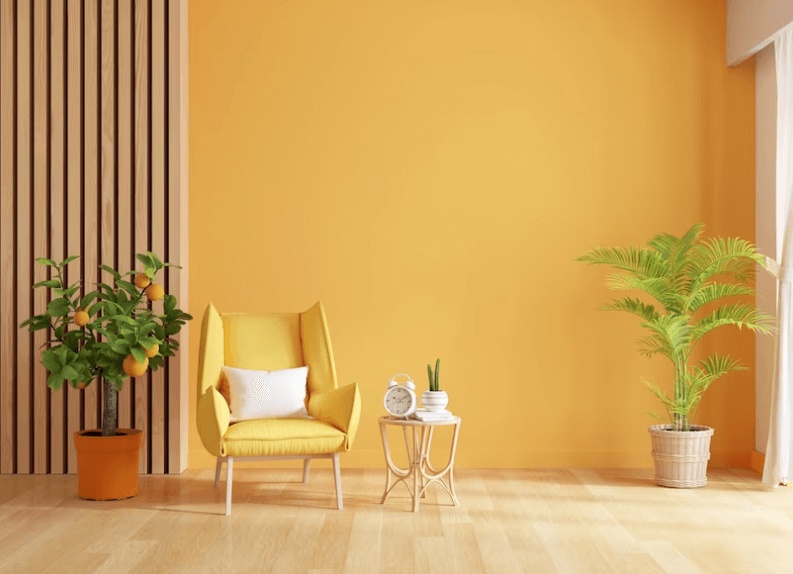Choosing the perfect color scheme for your home is an important decision that can greatly impact the overall ambiance and aesthetic appeal of your living space. Whether you are planning a complete home makeover or just looking to refresh the existing color palette, selecting the right colors can make a significant difference. In this guide, we will explore the key factors to consider when choosing a color scheme for your home and provide useful tips to help you create a harmonious and visually pleasing environment.
Understand the Psychology of Colors:
Colors have the power to evoke emotions and influence moods, so it's crucial to understand the psychology behind different hues. Warm colors like red, orange, and yellow tend to create a cozy and energetic atmosphere, while cool colors like blue, green, and purple promote a calming and relaxing ambiance. Neutral tones like white, beige, and gray are versatile and can be used as a base for any color scheme. Consider the desired mood for each room and choose colors accordingly.
Take Inspiration from the Environment:
Draw inspiration from the natural environment surrounding your home. Consider the colors of the landscape, such as the hues of the sky, trees, and flowers. If you live near the coast, coastal colors like blues, sandy neutrals, and soft greens can create a serene and beachy feel. Urban environments might inspire you to incorporate bold and vibrant colors found in street art or architectural elements. By connecting your interior design to the outside world, you can create a cohesive and harmonious space.
Consider the Lighting Conditions:
Lighting plays a crucial role in how colors are perceived within a space. Natural light, artificial lighting, and even the direction of light can greatly affect the appearance of colors. Before finalizing your color scheme, observe how the lighting conditions change throughout the day in each room. Test paint samples on the walls and observe how they look in different lighting situations. This will help you choose colors that complement the lighting in your home and avoid any unwanted surprises.
Use the Color Wheel:
A color wheel is a valuable tool that can assist you in creating a well-balanced and visually appealing color scheme. The wheel consists of primary colors (red, blue, and yellow), secondary colors (orange, green, and purple), and tertiary colors (combinations of primary and secondary colors). A common approach is to choose colors that are adjacent to each other on the wheel, known as analogous colors, to create a harmonious and cohesive look. Alternatively, you can opt for complementary colors, which are located opposite each other on the wheel, to create a vibrant and contrasting effect.

Consider the Room's Purpose:
Different rooms serve different purposes, and the color scheme should align with the intended function of each space. For instance, in the bedroom, soothing and calming colors like blues, greens, and lavender can promote relaxation and sleep. In contrast, vibrant and energizing colors like reds, oranges, and yellows work well in areas designed for socializing, such as the living room or kitchen. Consider the activities that will take place in each room and select colors that enhance the desired mood and functionality.
Take Existing Elements into Account:
Consider the existing elements in your home, such as furniture, flooring, and fixtures, when choosing a color scheme. You want the colors to complement and enhance these elements rather than clash with them. If you have a statement piece of furniture or artwork, use its colors as a starting point for your color scheme. Take note of the undertones of these elements as well, as they can influence how colors appear in the space. Bring color swatches or samples when shopping for new items to ensure everything works harmoniously together.
Test Before Committing:
Before committing to a specific color scheme, it's essential to test the colors in your home. Paint small sections of the walls with the chosen colors or use large color swatches to get a sense of how they will look in the space. Observe how the colors interact with the lighting and existing elements in the room. It's also advisable to live with the colors for a few days to see how they make you feel and whether they meet your expectations.
Seek Professional Advice:
If you're unsure about choosing the right color scheme or want expert guidance, consider consulting with a professional interior designer or color consultant. They can provide valuable insights, suggest creative ideas, and help you find the perfect color combination for your home. They will take into account your preferences, lifestyle, and the architectural elements of your space to create a cohesive and personalized color scheme.
In conclusion, choosing the perfect color scheme for your home involves careful consideration of various factors, including color psychology, inspiration from the environment, lighting conditions, and the room's purpose. Use the color wheel as a guide and take existing elements into account. Test the colors before making a final decision, and if needed, seek professional advice. By following these guidelines, you can create a beautiful and harmonious living space that reflects your style and enhances your overall well-being.


No comments yet